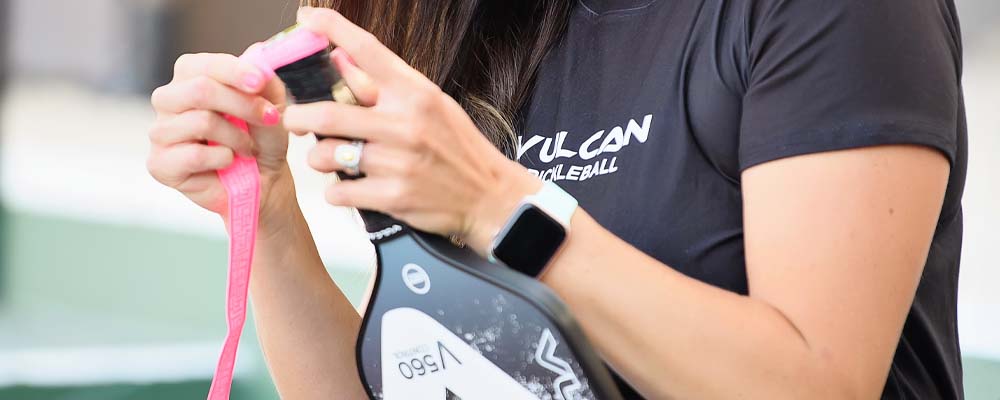There are key details to consider when choosing a pickleball paddle that is best for your game. Some of them are technical specifications, like weight and core thickness and the kind of materials used, but it also involves choosing a paddle that suits the pickleball game you prefer to play--aggressive or tactical, or both. Here are some things to consider when choosing a paddle:
1. Weight
The weight of a paddle can be a very important consideration when choosing a paddle. The more heavy the paddle, the more inherent power they can produce, but paddles over 8.4 oz. can be harder to control for dinks and create more issues for those with slower arm speeds. They can also create more strain on the arm, so those with existing injuries (like tennis elbow) will want to consider that before choosing a heavy weight paddle. Light weight paddles allow for faster reactions, but they do require the player using them to have more power naturally. Some of these things can be aided by the materials used to construct the paddles, but if you are unsure, paddles in the midweight range (around 7.8-8.0 oz.) are a good place to start.
2. Core Thickness
Core thickness can be a factor in the weight of the paddle, but it also plays a part in the thickness of the handle. For smaller hands, a thinner core can be what feels best in the hands, but thinner cores do have more pop from the paddle face. For those with tennis elbow, a thicker grip can be useful because it stops the player from gripping the handle too tightly, which can exacerbate the injury.
Thicker cores can be softer paddles, so they have inherent control properties, and they tend to be heavier paddles, so they can help produce depth in shots. They also have more vibration dampening and stability. (Read more in depth information about core thickness in this blog.)
3. Paddle Face Materials
The most common materials used in paddle face construction are fiberglass and carbon fiber. Traditionally, fiberglass is associated with more control playability factors, while carbon fiber is associated more with creating power and pop. The reality is a little more complicated.
Fiberglass as a material (which you can find on the Vulcan V520 Paddles, for example) offer slightly more texture naturally. Because of this, they tend to offer higher spin production. The fiberglass can be softer, which is why the connection to control feels natural. Carbon Fiber materials, however, are incredibly durable. They are strong and often weaved into the surface, which really gives them a balance of touch and power.
Because the materials can play differently when paired with other paddle construction elements, Vulcan Pickleball chooses "power" and "control" paddles after rigorous testing and research. It is also why paddles with a great balance of control and power have their own category--hybrid paddles. (You can read more about hybrid paddles in this blog.)
Let us help.
Sometimes looking at paddle comparison charts and dividing your play into power or control feels incredibly overwhelming, especially for beginner and intermediate players. If you would like help narrowing down the selection, try taking the new Vulcan Paddle Recommendation Quiz!
And don't forget, Vulcan customer service is here to help! If you have any questions about paddles or want to try them out with the Vulcan Demo Program, contact the General Manager of Vulcan Pickleball at support@vulcansportinggoods.com.





The quiz was great help. Thank you